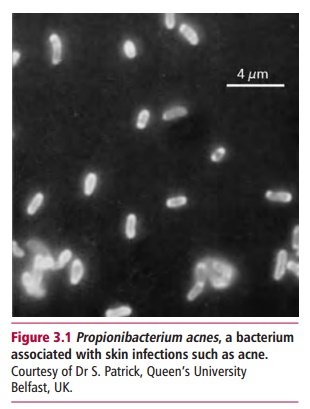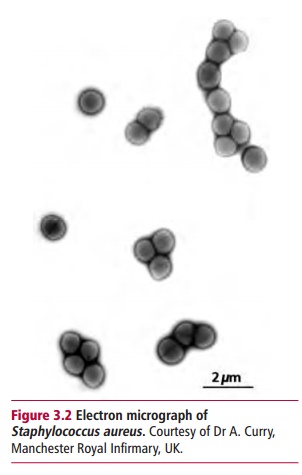Chapter: Biology of Disease: Infectious Diseases and Treatments
Infections of the Skin
INFECTIONS OF THE SKIN
The skin is a major element of the innate immune
defense . It is normally colonized by a variety of microorganisms although the
numbers and types vary between different areas of the body. In normal
circumstances it forms an effective barrier to invading microorganisms.
Papillomaviruses can infect epidermal cells and
stimulate their proliferation to form warts. Numerous herpes viruses have been
described and at least eight of them, the Human
Herpes Viruses (HHV1-8), infect
humans and can cause clinical disease. Largely due to historical reasons, they
are also known by other names (Table 3.1).
For example, Herpes simplex viruses 1
and 2 may infect skin of the genitalia causing Herpes labialis and Herpes
genitalis respectively and Varicella
zoster causes chickenpox and shingles.

Bacterial skin infections normally occur only if the
normal balance between the skin environment and these organisms is disturbed.
The outbreaks of acne caused by Propionibacterium
species (Figure 3.1) during the
hormonal changes associated with puberty are typical. Breaks in the skin from
wounds or surgery or lesions from insect bites or chickenpox may also lead to
infections of the skin by Staphylococcus
aureus (Figure 3.2) and Streptococcus pyogenes. In children
especially, they may cause impetigo contagiosa, an extremely contagious skin
infection. Staphylococcus aureus can
colonize hair follicles leading to inflammations that can develop into
abscesses (boils) or even, in extreme cases, carbuncles: an amalgam of several abscesses. Enterobacteria,

Pseudomonas
aeruginosa,
Staphylococcus aureus and
Streptococcus pyogenes, are all associated with a variety of skin problems
following weakening of the patient, for example, by diabetes , by a deficiency
of the immune system , by nosocomial,
or hospital acquired, infection of surgical wounds or burning of the skin. Mycobacterium leprae is the causative
organism of the dreaded disease leprosy, which, although now virtually
eliminated in developed countries, still affects many thousands in the
developing world.
Fungi are associated with a variety of infections,
particularly of the skin.

Related Topics